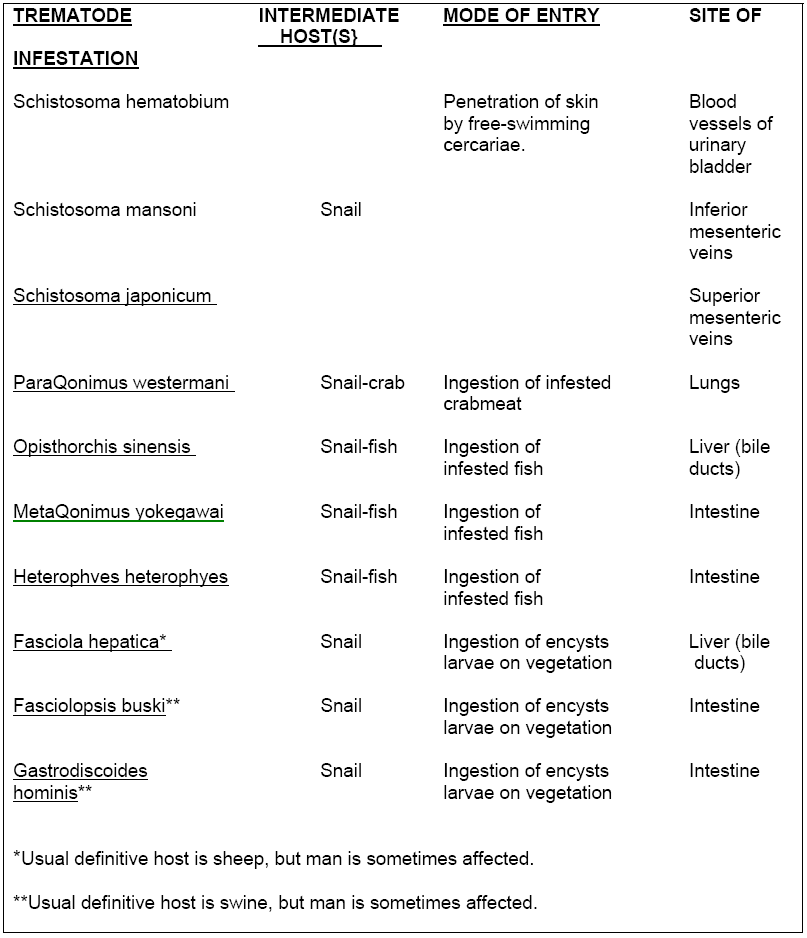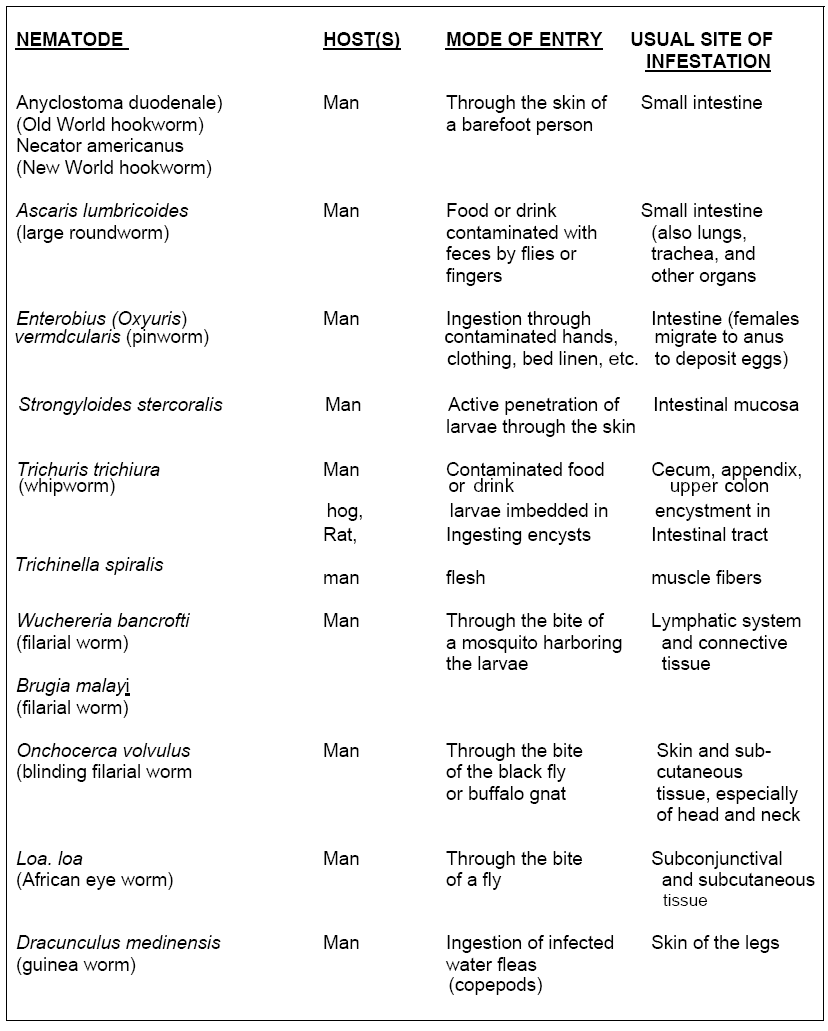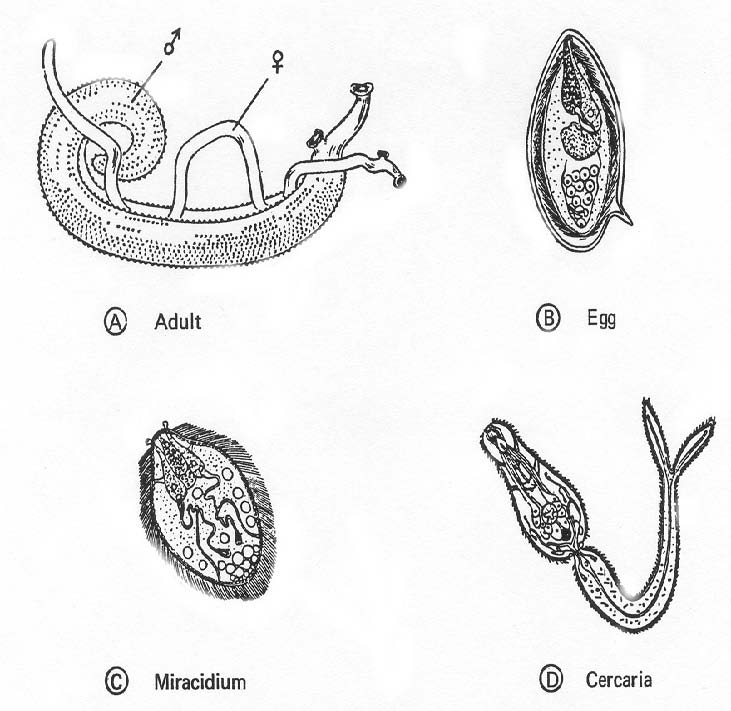Principles of Epidemiology and Microbiology
Lesson 2: Public Health Microbiology
Section V: Protozoa
2-27
2-27. TREMATODES (FLUKES)
Flukes are small, nonsegmented, leaf-shaped parasites equipped with "suckers" which enable them to attach themselves to the lumina of the intestines, liver, lungs, and other organs. They are referred to as intestinal, liver, lung, or blood flukes, depending on the organ affected. Some flukes attack more than one organ, but they are designated according to the organ that is primarily attacked. Most flukes are complete hermaphrodites; however, one family pathogenic to man--Schistosomatidae (blood flukes)--is dioecious, exhibiting both male and female forms. The adults live in copula within the blood vessels (figure 2-16). Flukes have a complicated life cycle that requires an intermediate host (certain species of water snails). The adult fluke (figure 2-16 (A)) lives within the definitive host, where it produces eggs (figure 2-16 (B)). The eggs pass from the host (usually through feces), and if water is present, a minute larval form known as a miracidium (figure 2-16 (C) ) emerges. The miracidium swims until it finds a snail (or perishes). It penetrates the intermediate host, where it develops into a cercaria (figure 2-16 (D)). The cercaria emerges from the snail and attaches itself to aquatic plants or penetrates the body of a second intermediate host (certain fishes and crabs), where it encysts. When the cysts (metacexcariae) are swallowed by man, they develop into adult flukes. The cercariae of blood flukes (schistosomes) are able to penetrate the unbroken skin of man or other definitive host and enter the blood stream. Table 2-9 lists the principal flukes affecting man.
Figure 2-16. Fluke (Schistosoma mansoni)

Table 2-9. Principal trematodes affecting man.
NOTE: Table 2-10 below refers to 2-28. Nematodes (Roundworms) found beneath
Table 2-10.

Table 2-10. Principal nematodes affecting man.


